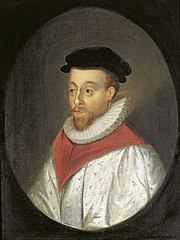
Biography
Anton Bruckner was born in Ansfelden on September 4, 1824. His father, a schoolmaster and organist, was his first music teacher. He died when Anton was 13 years old. Bruckner worked for a few years as a teacher's assistant, fiddling at village dances at night to supplement his income. He studied at the Augustinian monastery in St. Florian, becoming an organist there in 1851. In 1855, he took up a counterpoint course with Simon Sechter. He later studied with Otto Kitzler, who introduced him to the music of Richard Wagner, which Bruckner studied extensively from 1863 onwards. Bruckner continued his studies to the age of 40. Bruckner's genius, unlike that of a child prodigy (Wolfgang Amadeus Mozart, for example), did not appear until well into the fourth decade of his life. Furthermore, broad fame and acceptance did not come until he was over 60. A devout Catholic who loved to drink beer, Bruckner was out of step with his contemporaries. He had already in 1861 made acquaintance with Liszt who, like Bruckner, had a strong religious faith and who first and foremost was a harmonic innovator, initiating the new German school together with Wagner. Soon after Bruckner had ended his studies under Sechter and Kitzler, he wrote his first mature work, the Mass in D Minor.
In 1868, after Sechter had died, Bruckner hesitantly accepted Sechter's post as a teacher of music theory at the Vienna Conservatory, during which time he concentrated most of his energy on writing symphonies. These symphonies, however, were poorly received, at times considered "wild" and "nonsensical". He later accepted a post at the Vienna University in 1875, where he tried to make music theory a part of the curriculum. Overall, he was unhappy in Vienna, which was musically dominated by the critic Eduard Hanslick. At the time there was a feud between advocates of the music of Wagner and Brahms; by aligning himself with Wagner, however, Bruckner made an unintentional enemy out of Hanslick. However, he was not without supporters; Deutsche Zeitung's music critic Theodor Helm, and famous conductors such as Arthur Nikisch and Franz Schalk constantly tried to bring his music to the public, and for this purpose proposed 'improvements' for making Bruckner's music more acceptable to the public. While Bruckner allowed these changes, he also made sure in his will to bequeath his original scores to the Vienna National Library, confident of their musical validity. Another proof of Bruckner's confidence in his artistic ability is that he often started work on a new symphony just a few days after finishing another.
In addition to his symphonies, Bruckner wrote masses, motets and other sacred choral works, and a few chamber works, including a string quintet. Unlike his romantic symphonies, Bruckner's choral works are often conservative and contrapuntal in style.
Biographers generally characterize Bruckner as a very simple man, and numerous anecdotes abound as to his dogged pursuit of his chosen craft and his humble acceptance of the fame that eventually came his way. Once, after a rehearsal of his Fourth Symphony, the well-meaning Bruckner tipped the conductor Hans Richter: "When the symphony was over," Richter related, "Bruckner came to me, his face beaming with enthusiasm and joy. I felt him press a coin into my hand. 'Take this' he said, 'and drink a glass of beer to my health.'" Richter, of course, accepted the coin, a Maria Theresa thaler, and wore it on his watch-chain ever after.
Bruckner was a renowned organist in his day, impressing audiences in France in 1869, and England in 1871, giving six recitals on a new Henry Willis organ at Royal Albert Hall in London and five more at the Crystal Palace. Though he wrote no major works for the organ, his improvisation sessions sometimes yielded ideas for the Symphonies. He taught organ performance at the Conservatory; among his students were Hans Rott and Franz Schmidt. Gustav Mahler, who called Bruckner his "forerunner", attended the conservatory at this time (Walter n.d.).
In July 1886, the emperor decorated him with the Order of Franz-Josef.
Bruckner died in Vienna in 1896, of natural causes. He is buried in the crypt of St. Florian monastery church, right below his favorite organ.
Anton Bruckner Private University for Music, Drama, and Dance, an institution of higher education in Linz, close to his native Ansfelden, was named after him in 1932 ("Bruckner Conservatory Linz" until 2004). The Bruckner Orchester Linz was also named in his honor.






